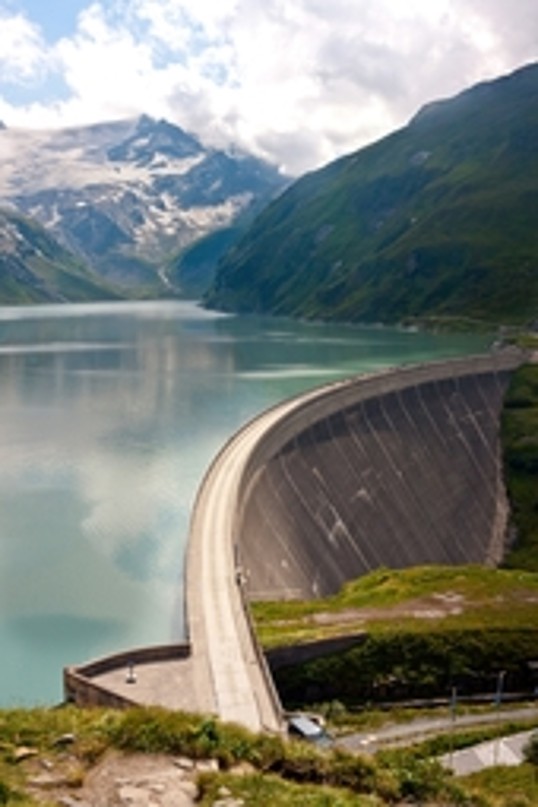Someone gets called out - no matter how late it is

Source: © Zechal - Fotolia.com
Germany is radically overhauling its energy policy. The national government's plans are for at least 35% of the country's energy to be generated from solar, wind and other sustainable energy sources by 2020. These sources currently account for 17% of the energy supply. Hydroelectric power is an important element in the renewable energy mix. How can workplaces at hydroelectric plants be made safe? Dr. Reinhard Lux of the BG ETEM answers questions on the subject.
Many modern hydroelectric plants are controlled remotely. Does this automatically increase the safety for workers?
Lux: That would be an over-generalization. By its nature, remote monitoring is generally limited to values that can be monitored by instruments. Some fault conditions cannot therefore be detected in advance. A fault alarm is not generally signalled until the hydroelectric plant is no longer able to operate properly, or at all.
When this situation occurs, an employee must then drive out to the plant and troubleshoot the fault – if necessary, in the middle of the night. In the first instance, they are generally required only to locate the fault. Even this however has occasionally led in the past to occupational accidents. And then there are the usual accident risks: trip, slip and fall accidents on the paths of the installation.
The workers are often working on their own, which adds to the risk. What preventive measures can be taken?
Lux: Working alone is permitted only with explicit permission of the person responsible for the plant. This is generally the shift manager on duty when the fault occurs. The individual charged with the task must be provided with all information on the safety measures that are to be taken. Depending upon the nature of the work, the "protection package" will include further measures:
For example, all workers working alone must report to the control station as soon as they reach their workplace, and again when they have completed the work. The control station may in turn make check-up calls at regular intervals. A personal emergency signal facility may also be beneficial. As a general measure, rescue facilities and procedures must be defined.
Some tasks must not be performed by an employee working alone at any time. These include diving tasks, work in tunnels, constrained areas and penstocks, and the use of power saws to break up debris.
What hazards may arise during the routine maintenance work?
Lux: Firstly, numerous hazards, the corresponding protective measures, and the model solutions proven in the field are presented in the German Social Accident Insurance's informative publication BGI/GUV-I 8684, governing safety during the operation of hydroelectric plants.
A typical hazard at hydroelectric plants is the risk of drowning. It is not generally possible to safeguard all structures by means of handrails, since they would be damaged or destroyed during high water levels. Lifejackets must therefore be worn during maintenance work on these parts of the plant.The provision of lifeboats is also recommended.
Some parts of older hydroelectric plants are accessible only via narrow and steep paths. These plants cannot always be modified to bring them into line with the current requirements. Workers are therefore able to reduce the risk of falling only by exercising caution and by safe behaviour.
Ladders present further hazards. Particularly in areas through which water flows, it is often not possible for caged ladders or fall arresters with rigid anchor line to be used. The retractable type fall arrester is therefore often the only way by which the ladder can be climbed safely.
Do large volumes of floating debris constitute a particular hazard?
Lux: Floating debris is a serious hazard, particularly in run-of-the-river hydroelectric plants. Particularly when water levels are high, large tree trunks, drums or animal carcasses are carried by the water and obstruct its flow into the plant. The plants are equipped with intake screens in order to filter the floating debris. The screens are generally cleaned automatically. Chainsaws may however have to be used in order to break up bulky debris such as large interlocked branches.
The work of maintenance or repairs is often outsourced to external companies. What can the operators of hydroelectric plants do in order to ensure occupational safety in the plants even when work is outsourced to a succession of outside companies?
Lux: Under the German Occupational Safety and Health Act, the operators are obliged to produce risk assessments for all essential plant components and the work to be performed on them. The appropriate safety measures are defined on the basis of these assessments. If work is commissioned from outside companies, the commissioning party must inform the contracting company of possible hazards. The outsourcer must provide instruction to the responsible parties in the contracting company, and perform spot checks of whether the employees are behaving appropriately. It is therefore advantageous to outsource work only to companies with the necessary expertise. The following questions may be useful during selection of a company:
Are the insured employees of the outside company suitably qualified: are they for example skilled electricians, welders or divers? Has the outside company conducted risk assessments of its own? Does the outside company have the support of OSH professionals and occupational physicians? How does the outside company select subcontractors?
Suitable photographs for the article:
http://commons.wikimedia.org/....jpg
http://commons.wikimedia.org/...jpg
More interviews on the following topics
